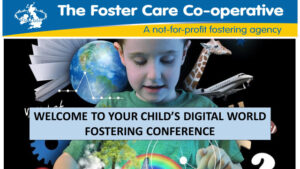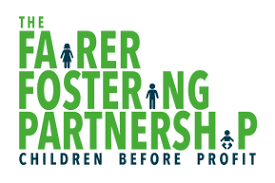
This month is a reflective blog on observing how we create and express belonging in digital families.
How do we create and express belonging in digital families?

This month in my training role at FCC I am delivering training on the secure base model and specifically the Family Membership dimension of the model. This training, which is part of our new Safer Caring Programme for 2019, enables practical reflection on how we can help a child and young person feel they belong as part of the family, and for children looked after, it considers how we can support a child to feel belonging to more than one family.
I have delivered this workshop many times but realised that something was missing from the discussion, exercises and the information slides, and that is the child’s and the families’ digital worlds. We talk about creating belonging through sharing day to day family routines and expectations, being a part of family celebrations and events as well as the child having their own space and role in the family. Constructing belonging is a careful balance between sensitively and simultaneously managing the past and future, while recognising the importance of language to balance realism with idealism. A tough ask.
At home, as a parent of teenagers, I watch, observe and carefully ask questions about their online worlds. Until now, I have given little thought to how we use all our digital worlds; and how these interact as a family unit. I have since noticed some interesting patterns and my aim to always try and “press pause” (which I have blogged about before) often is interrupted digitally rather than verbally.
As a family, when we are together, we are regularly double screening. We all have smartphones within arm’s reach, ready to cradle and nurture when they cry (or rather Buzz [mine], beep, “goal” or kerching!), and our little family of smartphones are always watched over by a bigger screen in the corner of the room. My daughter is currently into WhatsApp, having created a family group as well as individual chats (excluding my son who isn’t on it) and regularly sends messages from different rooms and even across the couch!

Last night, having realised that I had completely failed to ‘press pause’, I found myself verbally muted into a lengthy WhatsApp chat with my daughter across the room. When I realised what we were doing I spoke aloud. Yes, actual verbal communication, and asked if we could have this as a conversation. The ‘look’ I then received for interrupting the football (simultaneously being absorbed on the goal alerts, tweet alerts and the big screen in the corner of the room) made me realise that in order for us to sit physically together as a family, in one room, we had created our own routines for belonging and partnership using our digital worlds.
We were belonging together as a family, enjoying a family evening with shared company, communication and ‘chatting’, but this interaction was carefully constructed and executed through the most appropriate form of media.
We had our physical space together as a family (usually taking the same seats on the sofas) and our digital space, and the two were seamlessly blending together well. I wondered what I would need to do – or rather what we as a family would need to do – to welcome and create belonging for another child into our digital family?
Creating belonging has to include the online world. We have to consider what role digital behaviours play, and what patterns of responding exist or are evolving within the family – both as a whole, and between individual members. It becomes more important to therefore watch and observe your patterns as a family, and reflect on what this may look and feel like to others. Can a child, young person, or adult, joining the family enter the digital routines and feel part of them?
My reflections were interrupted last night with my eldest boisterously returning home from the football (yes, actually going out and watching the match physically, in person), but after the brief words of “well done” and “you must be pleased” were exchanged and the club songs were exhausted, silence returned as there was no Wi-Fi in the football ground and he needed to urgently read the tweets from the match in case he’d missed anything…..
We create and express belonging in many ways as individuals who come together as part of a family, and this can be expressed in many digital ways that we may not have considered.
Thank you for reading,
Lynn Findlay.








